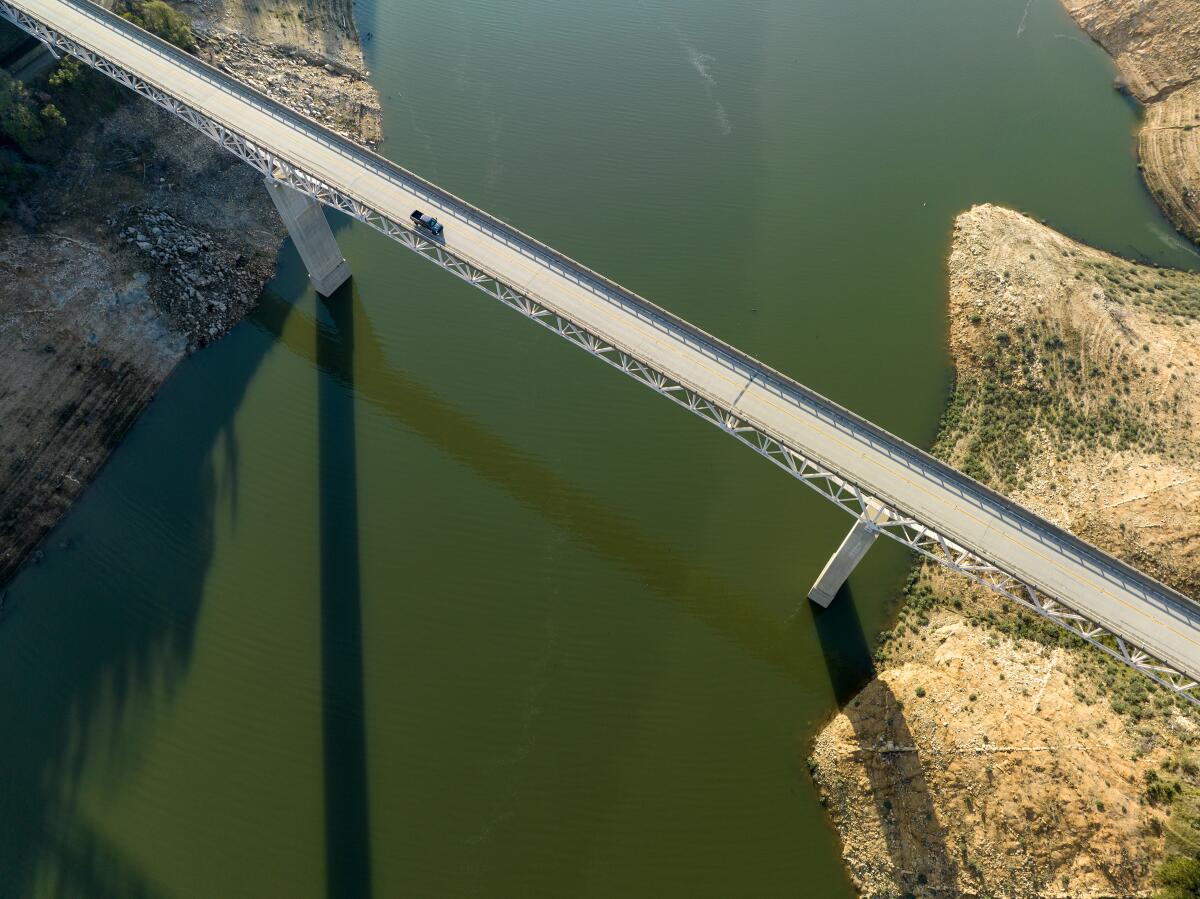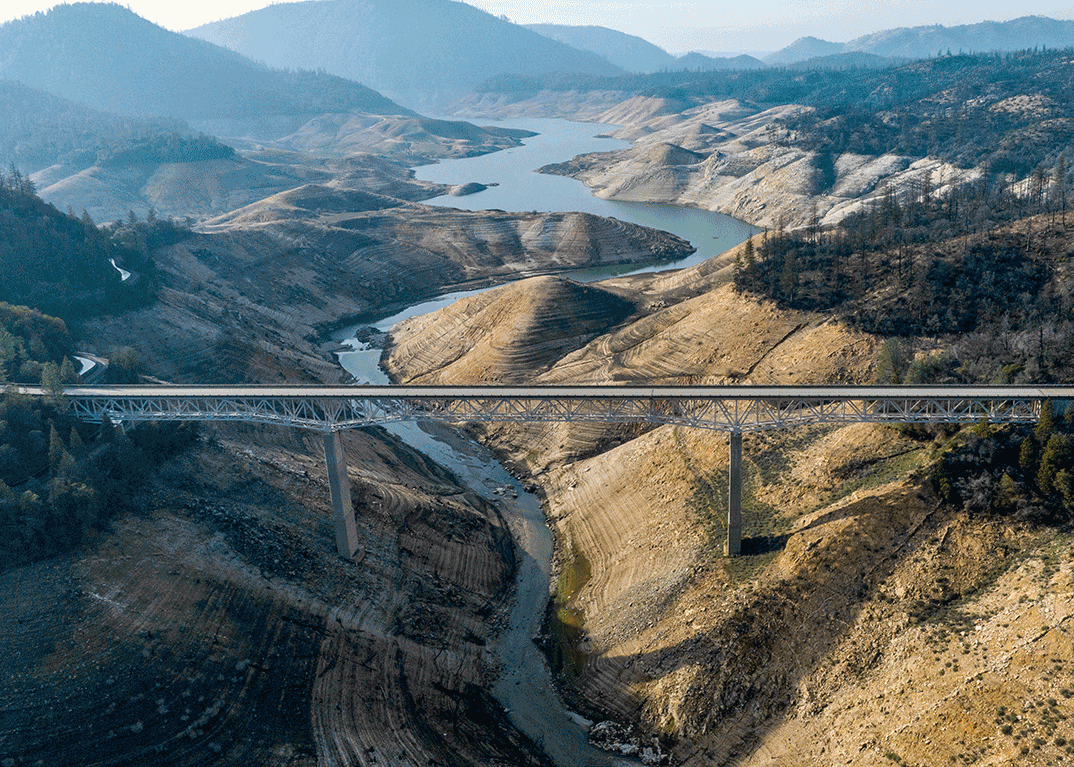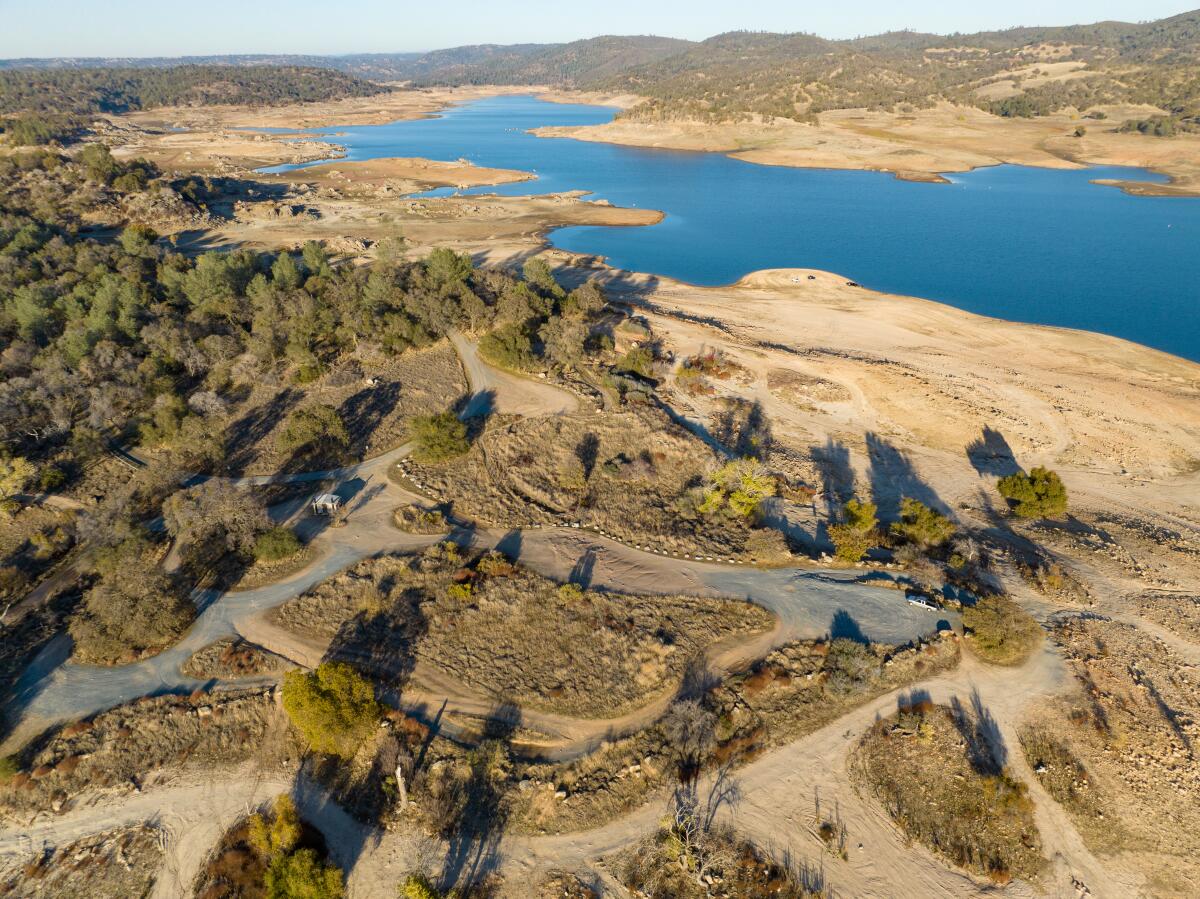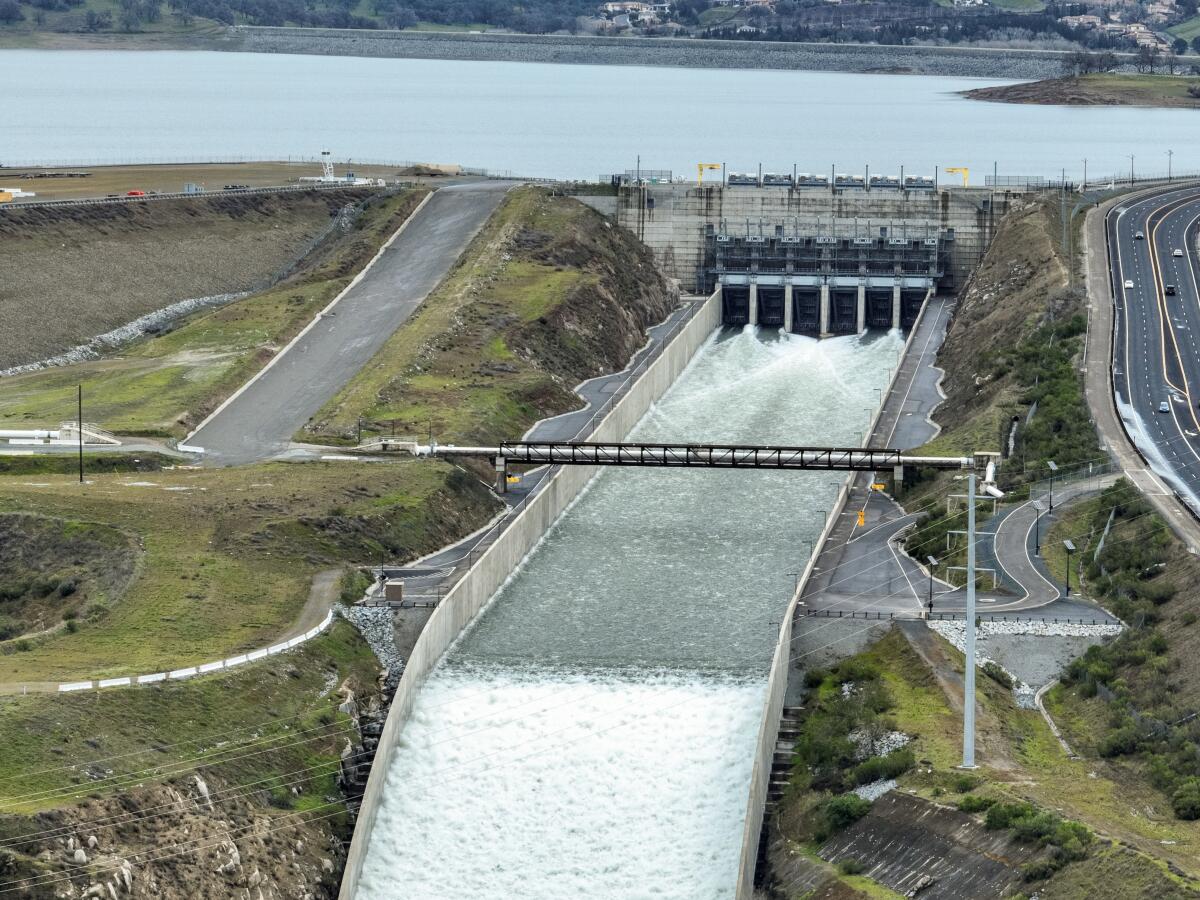Drone photos show dramatic rise in California reservoirs after record-setting rain, snow

- Share via
Winter storms across California have significantly improved drought conditions and filled state reservoirs that had held less than a third of their capacity.
Drone photos from the California Department of Water Resources show just how big a difference a recent series of storms, brought on by 11 atmospheric rivers, has made.
The image below shows Lake Oroville in Butte County, California’s second-biggest reservoir. The first image was taken Dec. 21. The second image was taken Jan. 12, after several storms had begun to refill the reservoir. The last image was taken March 8 and shows a dramatic improvement in the water level.
In the first image, the lake was at just 29% of its capacity. In the second image, the level had jumped to 51%. And by the third photo, the figure was up to 75%.

Per The Times’ drought tracker, Lake Oroville was 80% full as of Tuesday. The historical average level for that day — March 14 — was 71% over the last 30 years.
Nearly 100 miles south of Lake Oroville, Folsom Lake was exceptionally dry in November. When the photo below was taken, the lake sat at 27% of its capacity.

By March 10, the Folsom Dam was full enough that the Bureau of Reclamation released water down its auxiliary spillway into the American River to manage water levels.

As of Tuesday, Folsom Lake was at 63% of its capacity, in line with the historical average level.
The winter storms have eased drought conditions across the state and prompted authorities to lift mandatory water restrictions for millions of Southern California residents.
More to Read
Sign up for Essential California
The most important California stories and recommendations in your inbox every morning.
You may occasionally receive promotional content from the Los Angeles Times.










